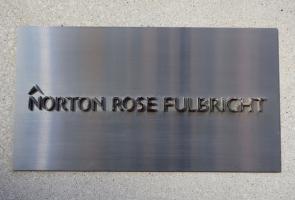
1. What is the importance of conducting regular check-ins and providing feedback to lateral hires??
Conducting regular check-ins and providing feedback to lateral hires is essential to identify and address any issues or concerns early on, ensuring a smoother integration process. When managed effectively, lateral transfers can drive sustainable firm growth—outlined in Law Firm Lateral Transfers: A Strategy for Growth and Success.
- Before diving into specific hurdles, it’s helpful to anchor your strategy in the latest law firm recruitment trends in 2025, which reveal how lateral hiring is rebounding and where firms are shifting resources.
2. What are some key performance indicators (KPIs) for evaluating the success of a lateral hiring strategy??
Some key performance indicators (KPIs) for evaluating the success of a lateral hiring strategy include time-to-fill, quality of hire, retention rate, and return on investment.
3. What is one example of how to measure the time-to-fill metric?
One example of measuring the time-to-fill metric is calculating the average time it takes to fill a lateral position from the initial job posting to the candidate's start date.
4. What is one example of evaluating the financial impact of lateral hires?
One example of evaluating the financial impact of lateral hires is to evaluate the impact of their contributions on your firm's revenue, profitability, and growth compared to hiring and onboarding costs. Smooth onboarding depends on understanding workplace expectations—outlined in Remote vs. Hybrid vs. In-Office Work: A Comprehensive Guide for Legal Job Seekers and Law Firms.
5. What is the overall goal of tracking key performance indicators (KPIs) regarding lateral hiring?
The overall goal of tracking key performance indicators (KPIs) when it comes to lateral hiring is to identify areas for improvement and adjust your hiring strategy accordingly to achieve better results.
In the legal profession, hiring the right talent is crucial for the success of a law firm. While résumés are a good starting point for evaluating a candidate's skills and experience, they often don't paint the full picture. This article delves into effective techniques for evaluating candidates in law firm interviews, ensuring that you make informed hiring decisions. The 2024 law firm lateral hiring market illustrates just how pressing these challenges have become.
- A useful counterpart to understanding firm challenges is this comprehensive guide to attorney lateral movement, which delves into how attorneys manage practice transitions and market shifts.
Identifying the Need for Lateral Hires
The first step in overcoming the challenges of lateral hiring is to identify when and why your firm needs to hire laterally. Some common reasons for lateral hiring include filling gaps in expertise, expanding into new practice areas, and replacing attorneys who have left the firm. On the candidate side, attorneys should also be mindful of 10 common pitfalls to stay marketable as a lateral law firm attorney.To identify these needs, assess your firm's capabilities, strengths, and weaknesses. This will help you create a more targeted hiring strategy that effectively addresses your talent acquisition goals.
Recognizing when your law firm requires lateral hires is crucial for addressing talent gaps and ensuring continued growth. Consider the following factors to help identify the need for lateral hires: For guidance on how remote and hybrid models affect lateral hiring in 2025‑2026, see Remote Work in Law Firms 2025‑2026.
- Firms like Lewis Roca Rothgerber Christie LLP: Empowering Legal Professionals for Impactful Careers show how structured support helps attorneys overcome the common challenges of lateral integration.
Before making a lateral transition, researching and understanding a firm’s strengths and opportunities—such as those at Adams and Reese LLP—can help candidates avoid missteps.
Gaps in Expertise:
Assess your firm's capabilities and identify areas where additional skills or experience are needed.
- Example: If your firm is expanding into intellectual property law but lacks experienced IP attorneys, a lateral hire with a strong IP background can fill this expertise gap.
Expanding into New Practice Areas:
Identify emerging market opportunities or client demands that require new practice areas or specialized legal services.
- Example: If your firm sees an increasing demand for privacy and data security legal services, hiring a lateral attorney with experience in this area can help meet client needs and capture new business.
Candidates who learn the art of applying to law firms without openings often find they can overcome many of the typical lateral hiring obstacles.
- To see how we approach candidate submissions with care and transparency, read We Respect Your Firm and are Trying to Help Attorneys Get a Job and Grow Your Business.
Replacing Departed Attorneys:
Track employee turnover and identify positions that must be filled due to attorney departures.
- Example: If a senior partner with a large book of business retires, a lateral hire with a similar practice focus and strong client relationships can help maintain revenue and client satisfaction.
Boosting Revenue and Profitability:
Analyze your firm's financial performance and identify areas where additional talent can contribute to increased revenue and profitability.
- Example: If your firm's mergers and acquisitions practice is experiencing rapid growth, hiring a lateral attorney with a strong M&A track record can help capitalize on this momentum and generate additional revenue.
Enhancing Market Presence and Reputation:
Evaluate your firm's market presence and identify opportunities to enhance your reputation by attracting high-profile attorneys.
- Example: Hiring a lateral attorney with a strong reputation in the legal community and a track record of success in high-profile cases can elevate your firm's standing and attract new clients.
Considering these factors, you can effectively determine when lateral hiring is necessary to address your law firm's talent needs and support its long-term goals. For a deeper dive into spotting problematic candidates early, see Identifying Risky Lateral Hires: A Guide for Law Firms.
Developing a Clear Hiring Strategy
A clear and well-thought-out hiring strategy is key to overcoming the challenges in lateral hiring. Establish your firm's short-term and long-term goals, and create a roadmap for achieving these objectives through lateral hiring. To address common early obstacles, new associates should consult What to Do When Starting at a New Law Firm: The Ultimate Guide to Success in Your First 90 Days. This strategy should encompass the following components:- Your horizontal challenges don’t start at the interview stage — they begin with macro top challenges in law recruitment like candidate scarcity, retention, and shifting firm expectations.
Defining Ideal Candidate Profiles:
- Identify the specific skills, qualifications, and experience required for each lateral position.
- Consider the cultural fit and personal attributes that align with your firm's values and work environment.
- Example: For a lateral tax attorney position, the ideal candidate profile may include expertise in international tax law, excellent communication skills, and a collaborative work style.
Identifying Target Sources for Lateral Hires:
- Determine the most effective sources for finding lateral candidates, such as legal recruiters, industry events, professional networks, and social media platforms.
- Example: To source experienced commercial litigation attorneys, your firm may target local bar association events, LinkedIn groups, and relationships with legal recruiters who specialize in litigation.
Developing a Strong Employer Brand:
- Showcase your firm's unique culture, values, and opportunities for career growth to differentiate your firm from competitors and attract top candidates.
- Example: Develop a comprehensive employer branding strategy that includes an engaging careers website, employee testimonials, and a strong presence on social media platforms to highlight your firm's commitment to work-life balance and professional development.
To anticipate and avoid roadblocks, attorneys benefit from mapping the larger transition landscape outlined in this comprehensive attorney lateral movement guide.
Implementing a Thorough and Efficient Hiring Process:
- Establish a well-structured and organized hiring process that ensures a consistent and objective evaluation of candidates.
- Example: Implement a multi-stage hiring process that includes resume screening, phone interviews, in-person interviews, skills assessments, and reference checks to ensure a comprehensive evaluation of each candidate.
By incorporating these components into your hiring strategy, your law firm can more effectively navigate the lateral hiring process and secure the top talent needed to achieve its goals.
Attracting Top Lateral Talent
Attracting top talent to your law firm can be challenging, especially in a competitive legal market. To overcome this obstacle, focus on the following aspects:
- Employer Branding: Develop a strong employer brand that showcases your firm's unique culture, values, and opportunities for career growth. This will help differentiate your firm from competitors and attract top candidates.
- Networking and Relationship Building: Establish and maintain relationships with key stakeholders in the legal industry, such as law schools, legal recruiters, and professional associations. This will help your firm stay updated on market trends, identify potential candidates, and create a talent pipeline for future needs.
- Competitive Compensation and Benefits: Offer competitive compensation packages and benefits that meet or exceed industry standards. This will help attract and retain top lateral talent.
One example of a competitive but navigable firm is highlighted in this exploration of employment prospects at Jeffer Mangels Butler & Mitchell LLP, which details how candidates can stand out in the hiring process.
Assessing Lateral Candidates Effectively
A thorough and objective assessment of lateral candidates is crucial in making the right hiring decisions. To overcome the challenge of assessing lateral candidates, consider the following strategies: To complement these strategies, watch this video on why law firms rarely hire laterals from non-firm backgrounds for practical context.
- Structured Interviews: Implement a structured interview process focusing on the key skills, qualifications, and cultural fit required for the role. This will help reduce biases and ensure a more consistent and reliable evaluation of candidates.
- Reference and Background Checks: Conduct comprehensive reference and background checks to validate the candidate's professional achievements, work history, and potential red flags. This will help mitigate the risk of making a bad hire.
- Skills Testing and Behavioral Assessments: Utilize skills testing and behavioral assessments to gain additional insights into the candidate's capabilities and potential fit within your firm's culture. This will aid in making more informed hiring decisions.
A real-world example is explored in the challenges of transitioning from insurance defense to litigation, which details candidate positioning strategies.
- To mitigate many of these pitfalls, firms should see avoiding common mistakes in lateral hiring as a companion read, which lays out a five-step process from sourcing to onboarding.
Streamlining the Lateral Hiring Process
A smooth and efficient hiring process is essential for overcoming challenges in lateral hiring. Consider the following best practices to streamline your firm's hiring process:
- Establish Clear Roles and Responsibilities: Assign specific roles and responsibilities to each hiring team member to ensure a well-coordinated and efficient process. Proper recruiter coordination prevents ethical and logistical conflicts—explained in Contacting BCG Candidates Independently Harms You, Candidates and BCG.
- Leverage Technology: Use applicant tracking systems (ATS) and other recruitment technologies to automate tasks, manage candidate data, and streamline communication.
- Develop a Timeline: Create a hiring timeline that outlines each step of the process, from candidate sourcing to onboarding. This will help keep the hiring team on track and ensure a timely and organized process.
- Regular Communication: Maintain consistent communication with candidates throughout the hiring process to keep them engaged and informed. This will help create a positive candidate experience and reduce the risk of losing top talent to competing offers.
While screening is vital, the real test comes in tips for interviewing lateral candidates — this article offers sample questions and frameworks to uncover fit beyond credentials.
Managing Cultural Integration
Cultural integration is crucial to lateral hiring success, as it can significantly impact employee engagement, performance, and retention. To overcome the challenge of cultural integration, consider the following strategies:
- Onboarding Programs: Implement comprehensive onboarding programs designed to acquaint lateral hires with your firm's culture, values, and expectations. This will help them acclimate to the new environment and set the stage for long-term success.
- Mentorship and Buddy Systems: Pair lateral hires with seasoned attorneys or mentors within the firm who can provide guidance, support, and insight into the firm's culture and practices. This will help ease their transition and facilitate their integration into the team.
- Regular Check-ins and Feedback: Conduct regular check-ins and provide constructive feedback to lateral hires during their first few months at the firm. This will help identify and address any issues or concerns early on, ensuring a smoother integration process.
To amplify your talent profile, you’ll want to align your process with insights from the guide to hiring star attorneys, which describes how to structure evaluation and roles so that elite candidates see growth potential.
Measuring the Success of Lateral Hires
To overcome challenges in lateral hiring, measuring the success of your firm's hiring efforts is essential. Establish key performance indicators (KPIs) to evaluate the effectiveness of your hiring strategy and the overall impact of lateral hires on your firm's performance. Some KPIs to consider include:- You may want to evaluate this broader hiring decisions for law firms category — it encompasses both mistakes to avoid and strategic decision frameworks for lateral recruitment.
Time-To-Fill
The average time it takes to fill a lateral position, from the initial job posting to the candidate's start date.
- Measure the average time it takes to fill a lateral position from the initial job posting to the candidate's start date.
- Example: If your firm's average time-to-fill for lateral hires is 60 days, you may need to evaluate the efficiency of your hiring process or explore new sourcing strategies to expedite the process.
Screening becomes more effective when firms understand the 10 Candidate Red Flags That Could Cost Your Law Firm Big Time, which highlights the top warning signs recruiters should never ignore.
Quality of Hire
The performance, productivity, and cultural fit of lateral hires, as assessed through performance reviews and feedback from colleagues.
- Assess lateral hires' performance, productivity, and cultural fit through performance reviews, feedback from colleagues, and overall contributions to the firm.
- Example: If your lateral hires consistently receive high-performance ratings and positive feedback from their peers, this may indicate a successful hiring strategy that effectively identifies top talent.
In effect, many lateral roles are structured as internal lateral transfers as a growth strategy — bringing in attorneys whose existing books or practice lines align with the firm’s goals.
Retention Rate
The percentage of lateral hires who remain with the firm after a specified period, typically one or two years.
- Calculate the percentage of lateral hires who remain with the firm after a specified period, typically one or two years.
- Example: If your firm has a high retention rate for lateral hires (e.g., 90% after two years), this may indicate a strong hiring strategy that identifies candidates with long-term potential and an excellent cultural fit.
Return on Investment (ROI)
The financial impact of lateral hires on your firm's revenue, profitability, and growth, as compared to the costs of hiring and onboarding.
- Evaluate the financial impact of lateral hires on your firm's revenue, profitability, and growth compared to hiring and onboarding costs.
- Example: If your lateral hires generate significant new business or help reduce the workload for existing attorneys, leading to increased efficiency and profitability, this may signal a successful ROI for your lateral hiring efforts.
- When executed correctly, lateral recruiting becomes a growth engine. For a broader perspective, explore lateral hiring strategies for firm growth to see how firms can expand practice depth and revenue lines through strategic hires.
To explore how effective hiring strategies can turn these challenges into growth opportunities, see Maximizing Your Law Firm’s Growth: The Ins and Outs of Lateral Hiring Strategies.
For a practical companion resource, 6 Secrets How to Get Hired Laterally in A Prestigious Law Firm shares actionable solutions to overcome many of the same challenges from the attorney’s perspective.
Conclusion
Overcoming the common challenges in law firm lateral hiring requires a strategic approach, effective processes, and a strong focus on cultural integration. By following the guidelines outlined in this comprehensive guide, your firm can successfully navigate the complexities of lateral hiring and secure top legal talent to support your firm's growth and success.- Finally, if your firm is mid-size or boutique, you may benefit particularly from recruiting and compensating small law firms, which tailors lateral strategies to smaller platforms with limited bandwidth.




